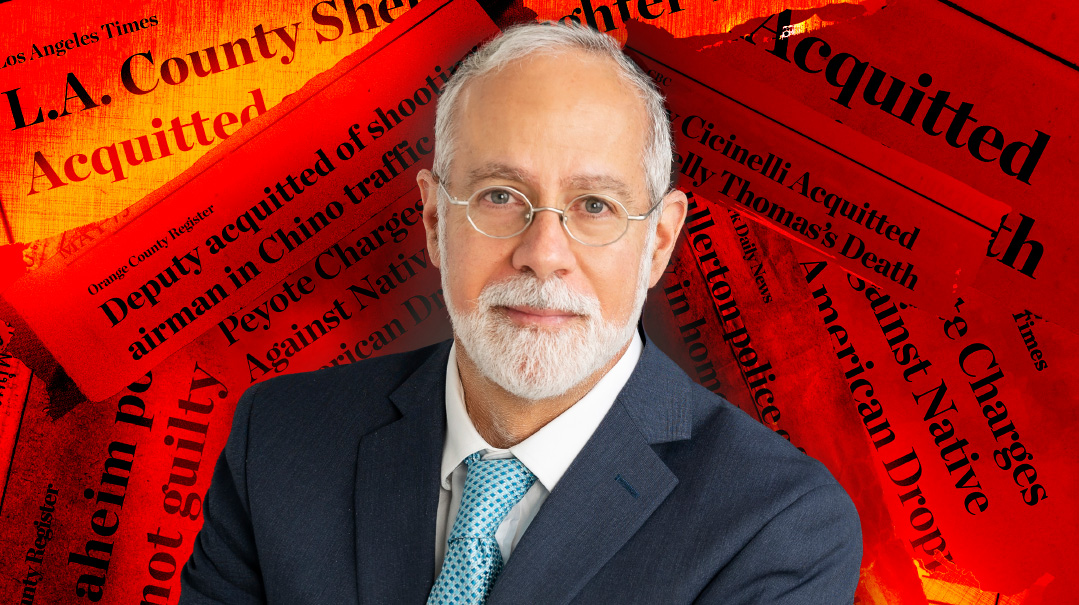Law and Order

World-class trial lawyer Michael Schwartz attributes his success to the Ultimate Judge

Photos: Family archives, Nate Taylor, AP Images
If a picture is worth a thousand words, that’s without taking into account the heightened impact of an incriminating video. But world-class attorney Michael Schwartz — a winner of many high-profile cases in which he has successfully defended police officers accused of disproportionate violence and even manslaughter — credits the Ultimate Judge while proving time and again that the screen isn’t always the full view
From the perspective of the defense, the video couldn’t have been worse: Off-duty, unarmed Air Force policeman Elio Carrion lies sprawled on the ground in front of a car. Hulking Deputy Sheriff Ivory Webb stands a few feet away, his gun trained on Carrion.
“Get up! Get up!” Webb orders.
Carrion responds, “Okay, I’m getting up.”
As he begins to comply, Webb suddenly shoots him three times; Carrion falls back, moaning.
“Why’d you shoot him? Why’d you shoot?” Carrion’s friend shouts in shock from the car. “That’s messed up, he was getting up!”
The year was 2007, and this was the first time a video of a cop shooting a civilian had gone viral, thanks to the ubiquity of the internet.
It was defense attorney Michael Schwartz’s job to defend Webb against the San Bernardino district attorney’s charges of attempted voluntary manslaughter and assault with a deadly weapon. If he failed, Webb would spend 18 years in prison.
“When I saw the video for the first time, my heart dropped to my stomach,” Michael later recalled.
After four weeks of analysis and dissection of the video, the jury began their deliberations at 9:30 a.m. At about 11:00 a.m., Michael got a call: The verdict was in.
“I was in L.A. having brunch with my wife — never in my wildest dreams did I think the verdict would come that fast,” he says. The crowd in San Bernardino Superior Court waited while Michael battled traffic for three hours, singing niggunim to relieve his anxiety.
When Michael arrived, he found the courtroom overflowing with reporters and cameras from every large television station and media outlet; spectators spilled out into the hallway. Security officers were everywhere — the country had seen nothing like this before, and they were preparing for violence.
“It would have taken a chainsaw to cut the tension in that room,” Michael says.
Finally, the clerk read the first verdict: “We, the jury… find the defendant… not guilty of the crime of attempted voluntary manslaughter.”
Webb sat immobile, and Michael began muttering under his breath, “Thank You, Hashem, thank You, Hashem, thank You, Hashem.”
Seconds later the next verdict was announced: “We, the jury… find the defendant… not guilty of the crime of assault….”
Michael pounded the table hard again and again, his words loud enough to be heard now. THANK YOU, HASHEM! Webb grabbed him in a bear hug, both of them overcome with emotion.
And the multitudes who’d seen the incriminating video were left wondering, How on earth did Schwartz just do that?
Oops! We could not locate your form.







